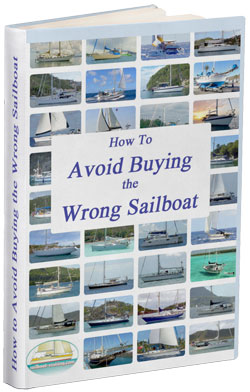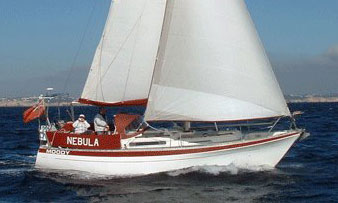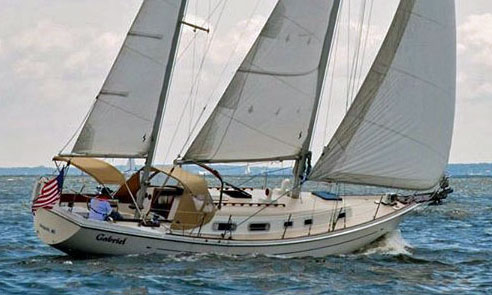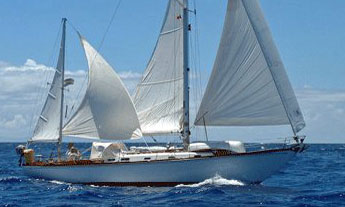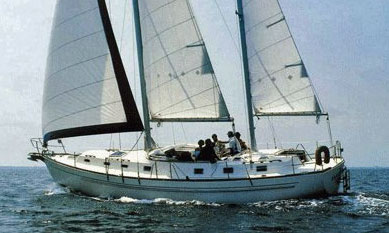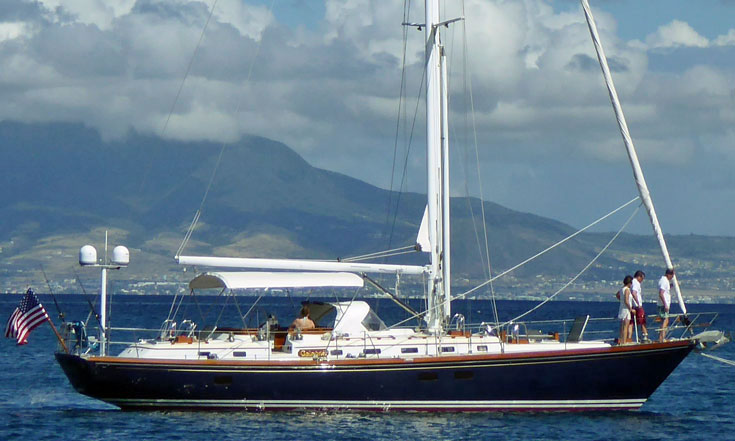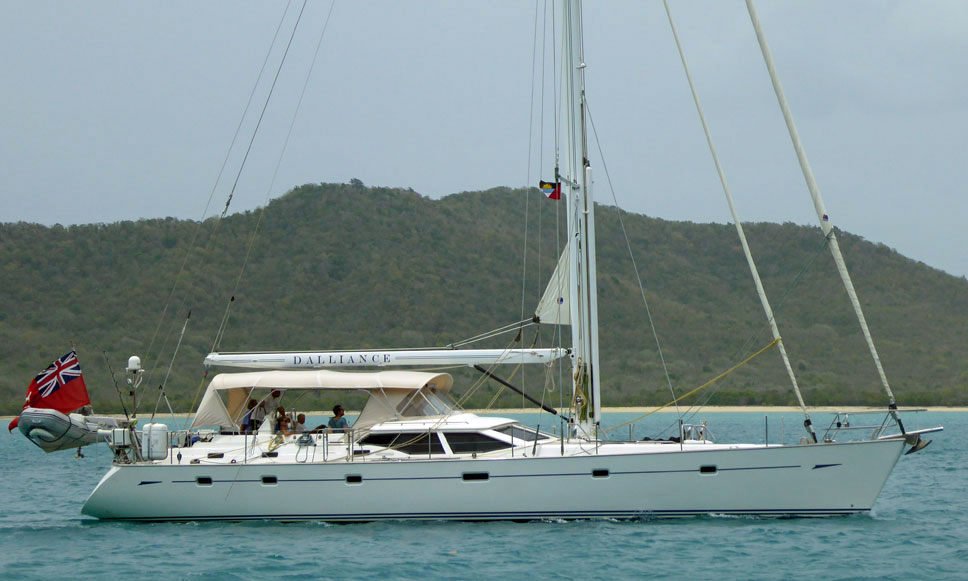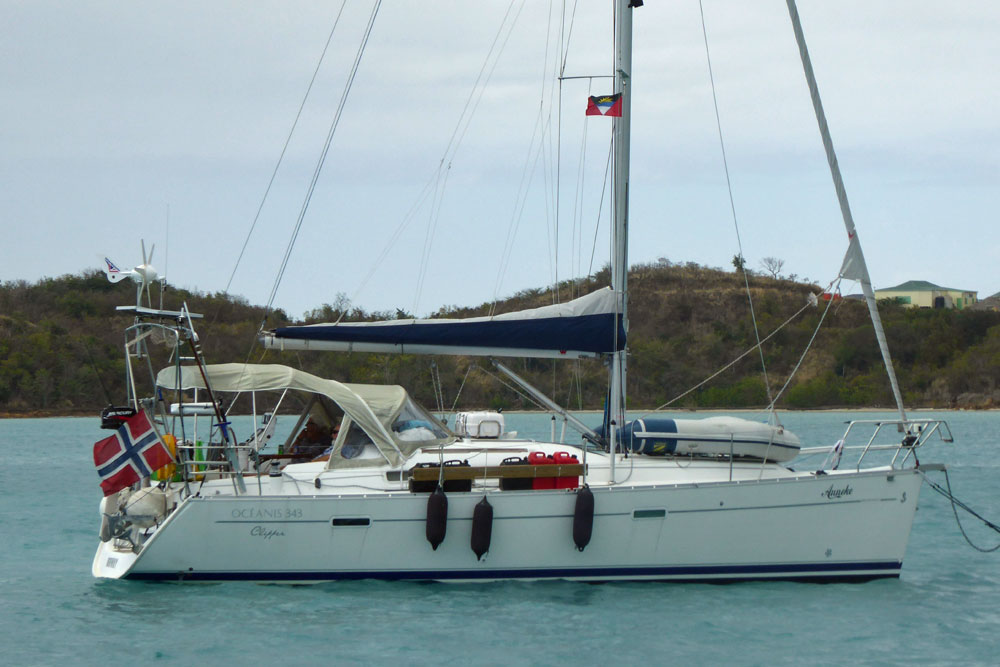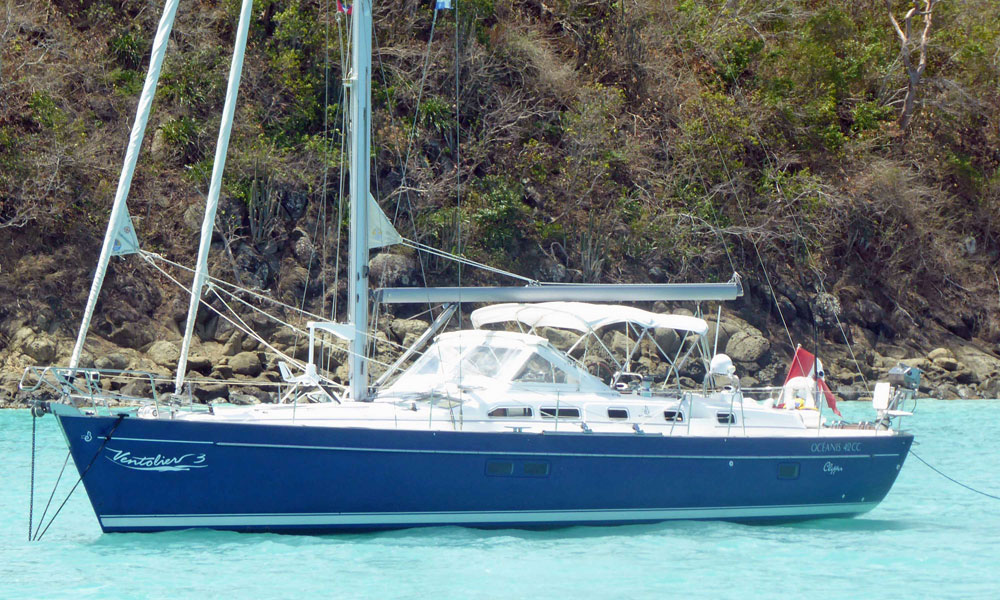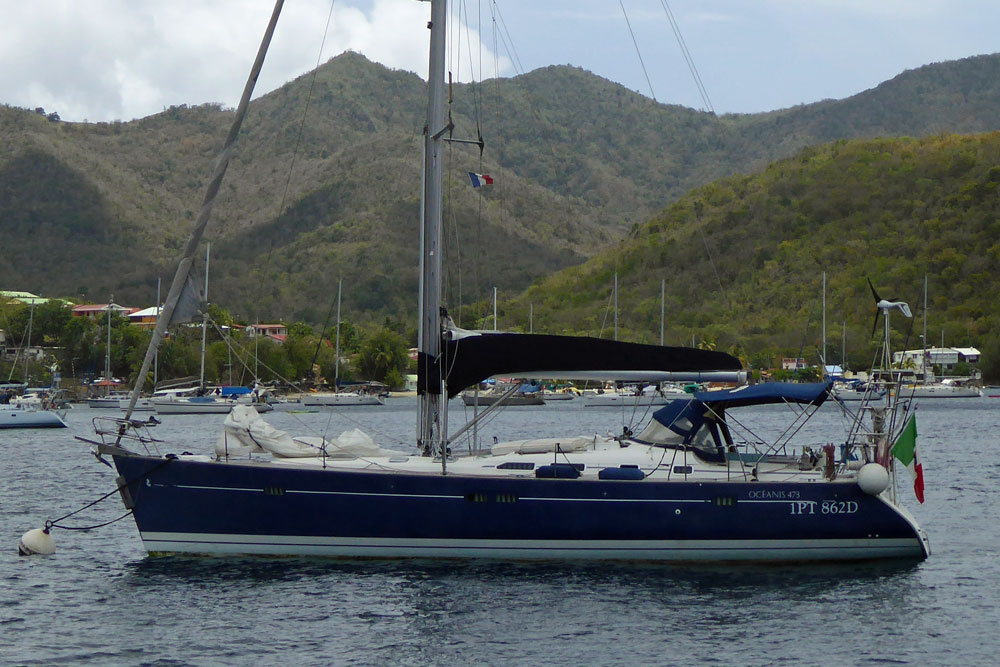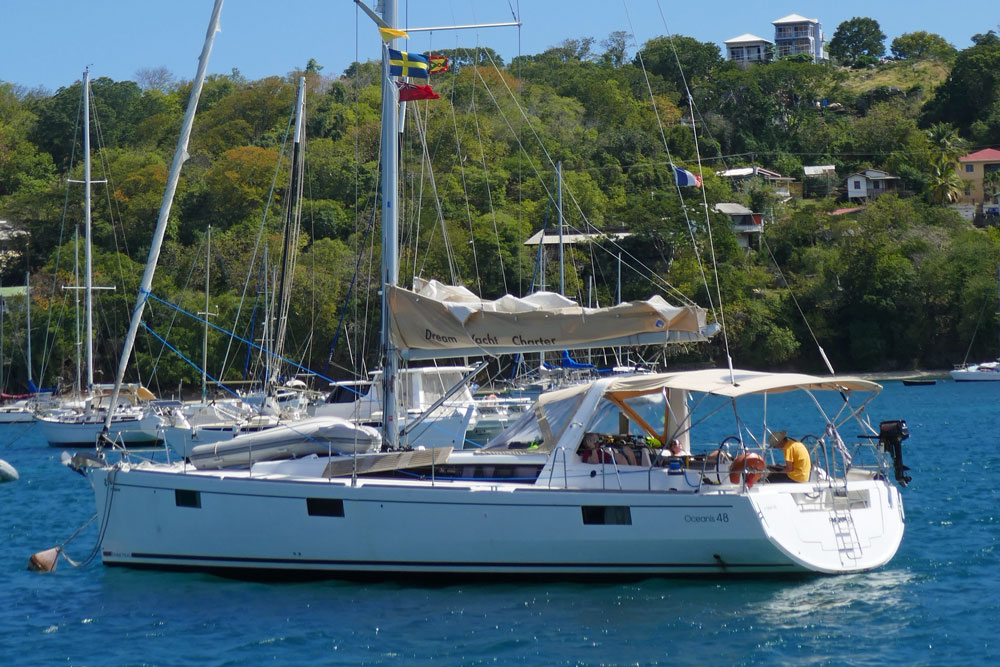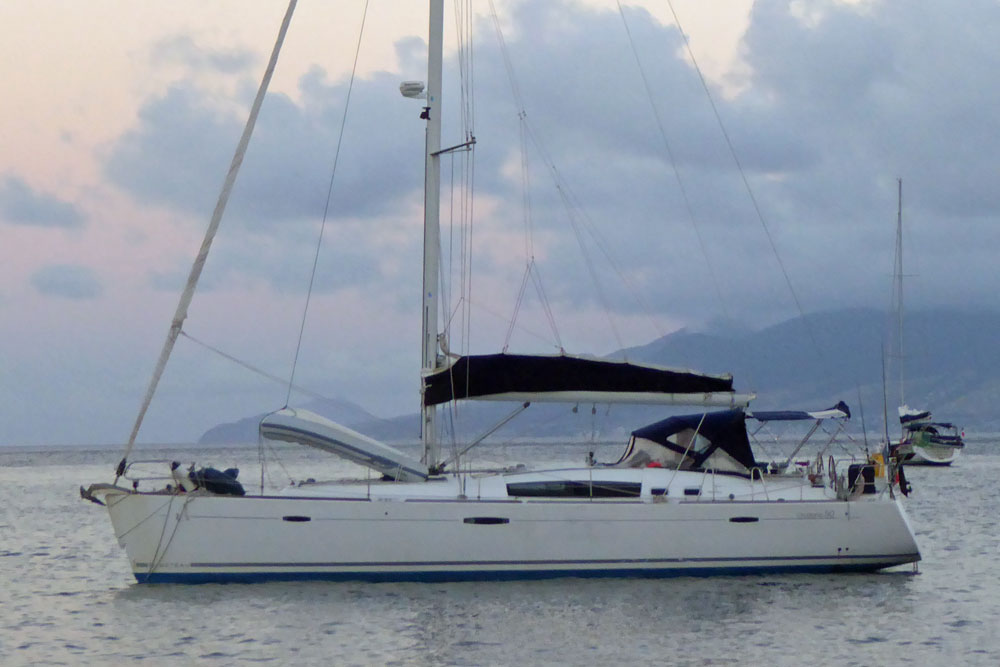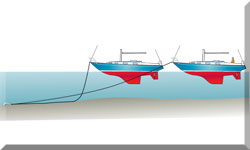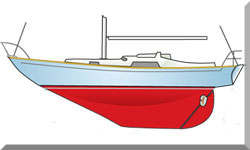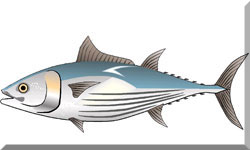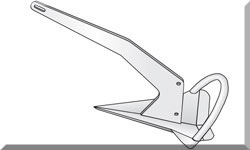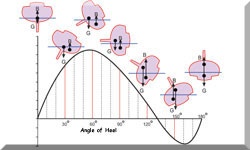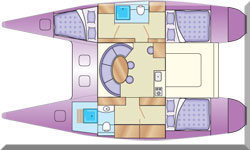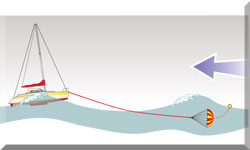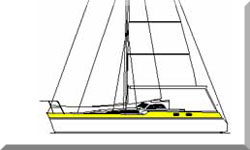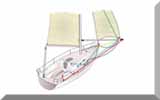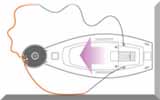- Home
- Sailboats 50'-55'
- Beneteau Oceanis 500
The Beneteau Oceanis 500 Sailboat
Specs & Key Performance Indicators
The Beneteau Oceanis 500 sailboat was designed by Philippe Briand and manufactured by Beneteau in France during the period 1988 to 1991.
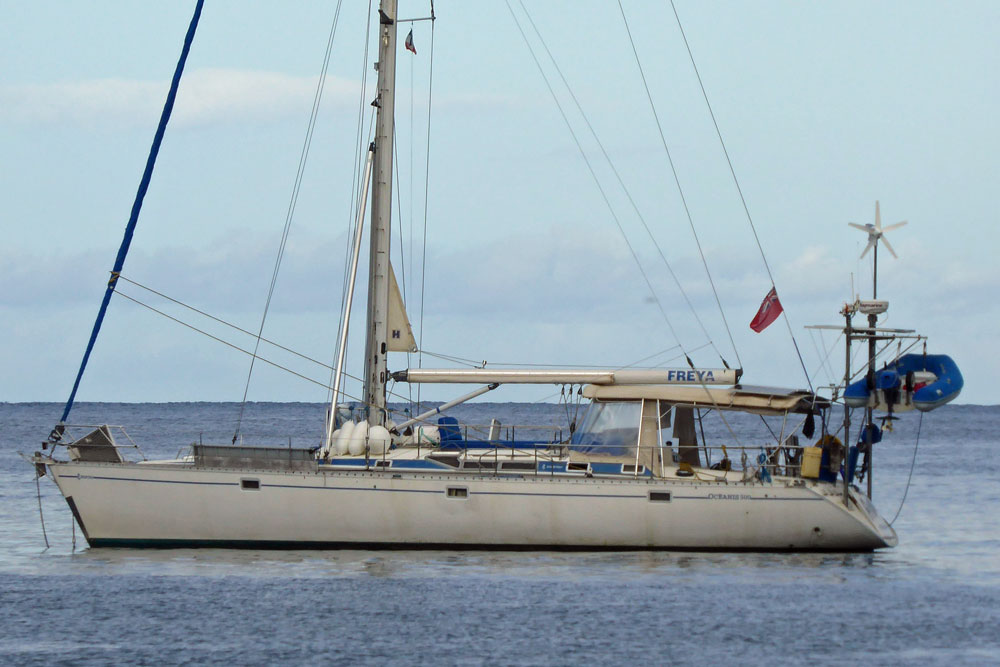 A Beneteau Oceanis 500
A Beneteau Oceanis 500Published Specification for the Beneteau Oceanis 500
Keel & Rudder Configuration: Wing keel and single spade rudder
Hull Material: GRP (Glass Reinforced Polyester)
Length Overall: 15.3 meters (50'2")*
Waterline Length: 13.6 meters (44'7")*
Beam: 4.8 meters (15'7")*
Draft: 1.8 meters (5'11")*
Rig Type: Masthead sloop
Displacement: 14,000 kg (31,070 lbs)*
Ballast: 4,900 kg (10,803 lbs)*
Sail Area: 95 m² (1,022 ft²)*
Water Tank Capacity: 1,003 litres (265 gallons)
Fuel Tank Capacity: 560 litres (148 gallons)
Hull Speed: 11.5 knots
Designer: Philippe Briand
Builder: Beneteau
Year First Built: 1987
Year Last Built: 1991
Number Built: 158
* Used to derive the design ratios referred to later in this article - here's how they're calculated...
Sail Areas & Rig Dimensions
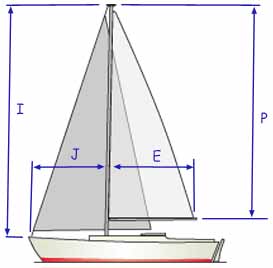 Sail Areas & Rig Dimensions
Sail Areas & Rig DimensionsWhere:
- “I” (59'7" / 18.15 m) is measured along the front of mast from the highest halyard to the main deck. The main deck is where the deck would be if there were no deckhouse.
- “J” (18'8" / 5.70 m) is the base of the foretriangle measured along the deck from the headstay to the mast.
- “P” (51'7" / 15.73 m) is the luff length of the main-sail, measured along the aft face of the mast from the top of the boom to the highest point that the mainsail can be hoisted.
- “E” (18'0" / 5.50 m) is the foot length of the main-sail, measured along the boom from the after face of the mast to the outermost point on the boom to which the main can be pulled.
Foresail area: 557 ft² / 51.73 m²
Mainsail area: 465 ft² / 43.24 m²
Published Design Ratios
The Key Performance Indicators (KPIs)
- Sail Area to Displacement Ratio (SA/D) of 17.9: This ratio shows the amount of sail power relative to the boat's weight. With an SA/D of 17.9, the Oceanis 500 has a good balance of power and weight, making it fairly quick and responsive in light to moderate winds. It's powerful enough to enjoy some spirited sailing but not so overpowered that it becomes difficult to handle
- Displacement-Length Ratio (DLR) of 158: The DLR gives insight into the boat's potential speed and ease of movement through the water. A lower DLR, like 158, suggests that the Oceanis 500 is relatively light for its length, meaning it can achieve good speeds, particularly in lighter wind conditions. It also implies that the boat is easier to handle and can accelerate quickly.
- Ballast Ratio of 0.35: This ratio indicates the amount of weight in the keel compared to the boat's overall weight, contributing to its stability. A ballast ratio of 0.35 means the Oceanis 500 has good initial stability, which helps in keeping the boat upright and comfortable, especially when sailing upwind.
- Comfort Ratio of 26.3: The comfort ratio assesses how smooth and comfortable the boat's motion is likely to be in rough seas. At 26.3, the Oceanis 500 scores relatively high, indicating a comfortable ride for long-distance cruising, reducing the motion felt by the crew.
- Capsize Screening Formula (CSF) of 2.0: The CSF predicts the boat's likelihood of capsizing. A CSF of 2.0 is on the threshold but generally acceptable for ocean-going vessels. It suggests that the Oceanis 500 has a reasonable margin of safety and is suitable for offshore sailing, provided normal precautions are observed.
In conclusion, the Beneteau Oceanis 500 sailboat offers a well-rounded sailing experience, combining speed, comfort, and stability. Its balanced sail area to displacement ratio ensures responsive and enjoyable performance in a variety of wind conditions, while the displacement-length ratio suggests good speed potential and ease of handling. The ballast ratio provides stability, making it a reliable choice for both coastal and offshore cruising. Additionally, the high comfort ratio promises a smooth ride in rough seas, and the capsize screening formula indicates a reasonable margin of safety for ocean voyages. Overall, the Beneteau Oceanis 500 is a versatile cruiser, well-suited for sailors seeking both performance and comfort on the water.
The above design ratios are fairly typical for a light displacement sailboat of this type and can be interpreted to provide an indication of such a vessel's likely sailing characteristics - however they have their limitations:
- The design ratios are static measurements which don't account for dynamic factors like wave action, wind gusts, or crew actions.
- They simplify complex interactions into single numbers, which can be misleading. Real-world performance is influenced by a multitude of factors that these ratios can't fully capture.
- The context in which the boat is intended to be used (e.g., coastal cruising vs. offshore racing) can greatly affect how these ratios should be interpreted.
Consequently, while these ratios provide valuable insights into the theoretical performance characteristics of a sailboat, they should be used as part of a broader assessment that includes practical experience, sea trials, and expert advice.
More Specs & Key Performance Indicators for Popular Cruising Boats
This article was written with the assistance of Gemini, a large language model developed by Google. Gemini was used to gather information, summarize research findings, and provide suggestions for the content and structure of the article.
Other sailboats in the Beneteau 'Oceanis' product range:
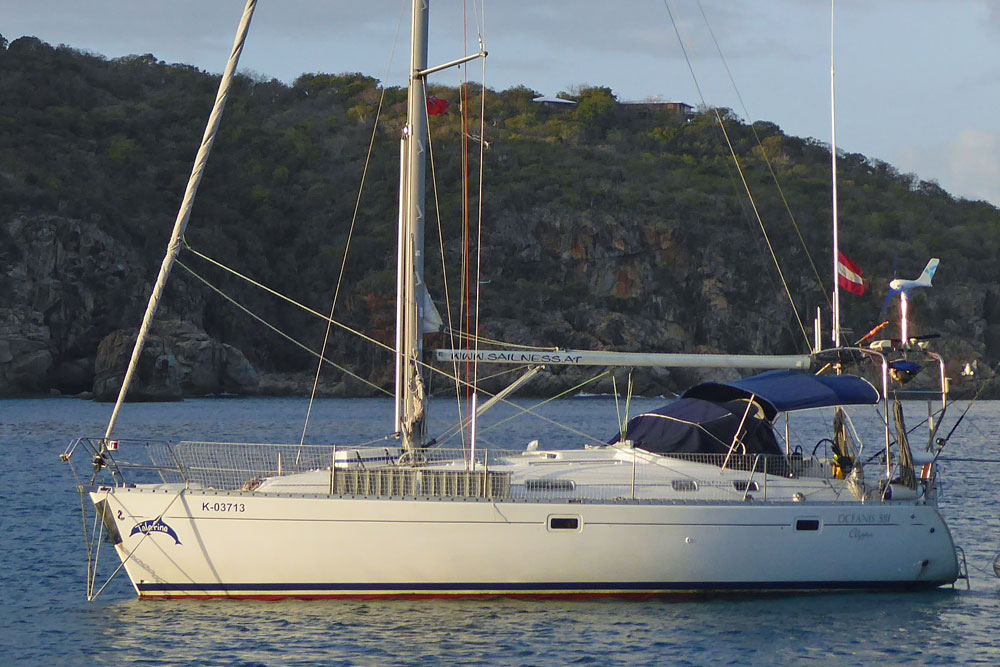 The Beneteau Oceanis 381
The Beneteau Oceanis 381Recent Articles
-
Modern Boat Electronics and the Latest Marine Instruments
Dec 20, 25 05:27 PM
Should sailboat instruments be linked to the latest boat electronics as a fully integrated system, or is it best to leave them as independent units? -
Hans Christian 43: Classic Bluewater Cruiser & Liveaboard Sailboat
Dec 10, 25 04:37 AM
Explore the Hans Christian 43: a legendary heavy-displacement, long-keel sailboat. Read our in-depth review of its specs, design ratios, and suitability for offshore cruising and living aboard. -
Planning Your Sailboat Liveaboard Lifestyle: An Ocean Sailor's Guide
Dec 06, 25 05:18 AM
Seasoned sailors share their methodical risk analysis for planning a secure Sailboat Liveaboard Lifestyle, covering financial, property, and relationship risks.
